Dahua IPC-HFW4300S 3MP mini bullet review
Dahua is now offering it’s “Eco-Savvy” series using the Aptina 3MP CMOS sensor vs. the 3MP Sony Exmor CMOS sensor used in other models. This new camera uses <5W of power vs. <6W on the 2MP mini bullet, the IPC-HFW3200S. Cost from U.S. distributors seems to be close to the 2MP IPC-HW3200S. Image quality has different characteristics over previous 1080P and 3MP cameras from Dahua.
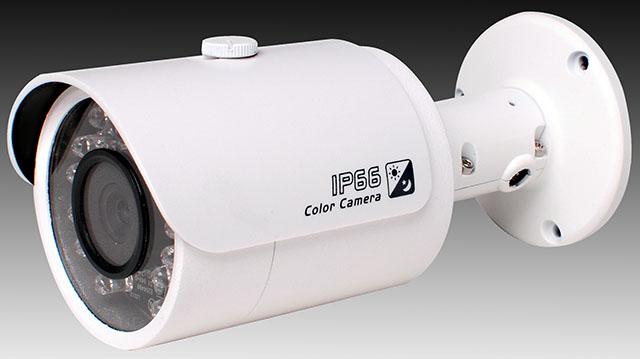
Main Features
1. 1/3” 3Megapixel progressive scan Aptina CMOS
2. H.264 & MJPEG dual-stream encoding
3. Max 20fps@3.0M(2048×1536) & 30fps@1080P(1920×1080)
4. 6mm fixed lens (6mm, 8mm optional)
5. Digital Wide Dynamic Range (DWDR)
6. 3D Noise Reduction
7. Back Light Compensation (BLC) and High Light Compensation (HLC)
8. Day/Night IR Cut Filter
9. IR LED working distance 30m
10. IP66 Rated Outdoor Bullet
11. Powered by PoE or 12V
12. Smartphone apps available
Compared to the last 3MP bullet I reviewed from Dahua, the IPC-HFW3300C, this is very small and not as feature rich. There’s no audio or alarm inputs, no SD card slot and the lens is fixed. In return, you get a very compact attractive camera for a significant lower price tag of about $199 in the U.S. from legitimate sources with a U.S. warranty, something new for Dahua.
If you have Dahua cameras, some of the issues people complained about in the past have been resolved, for example poor color accuracy and muddled details, for example in grass being blurred over by poor noise reduction algorithms. The biggest thing you’ll notice as you view the images and video, is dynamic range is quite good without having to enable WDR. One complaint I had about the Sony Exmor chip is the color saturation and contrast made for pretty images, but compromised detail. This new sensor from Aptina is the opposite, it does not compromise detail but may not make as pretty a picture as the Exmor. If you goal is a pretty picture for example for a website, the Exmor does a better job, if your goal is security, the Aptina does a better job of providing details. I did load the latest firmware on my IPC-HFW3300C to see if this is more of a firmware issues vs. a sensor issue, and I can confirm, this is not a firmware issue, these sensors are very different.
This is what the web interface looks like when you first log in. There’s options to take a snapshot, manually record, chose a stream and more. If you have a previous model Dahua, note there are some subtle changes to the interface and new features. One new feature is the question mark, provides online help. Also, what’s nice is when you set an aspect ratio, it is persistent, meaning when come back to viewing the camera on the web browser, if you chose 4:3 aspect ratio of 3MP, it remains as you can see below.
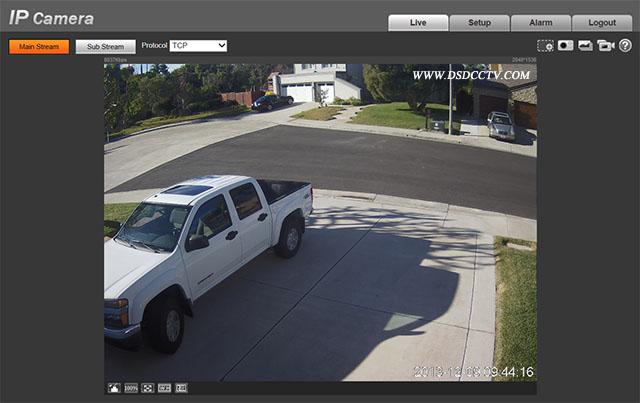
What used to be the “Properties” menu is now “Conditions” and has the concept of profiles. Many of the options that existed in the past are still here. Two new items to note are BLC Mode where you chose BLC, WDR or HLC and 3D NR, where you set the percentage of noise reduction. Also, Exposure mode allows different auto options.
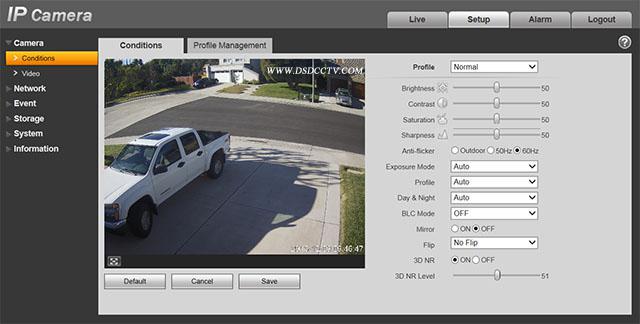
Profiles allow you set different options for day vs. night. In this screen you can chose a schedule and pick which time a profile takes effect. This is handy for setting different modes or contrast for day vs. night. This does not set the Day/Night IR cut filter, that is separate.

Resolution and frame rate are chosen in the Camera Video screen. This camera will do up to 20fps in 3MP mode or 30fps in 1080P mode. The defaults seem to work well here.
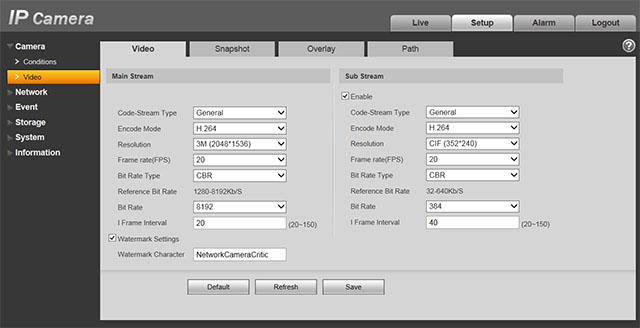
If you want the camera to record on motion, there’s a few things you have to set. First is under Event, Video Detect. You have to enable this feature.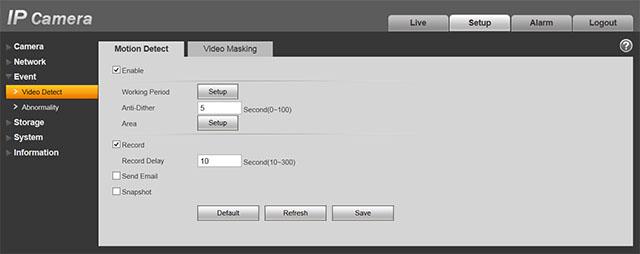
Then click on Setup next to Area to define the motion detect area. Here you can draw multiple motion detect zones and then apply a threshold and sensitivity.
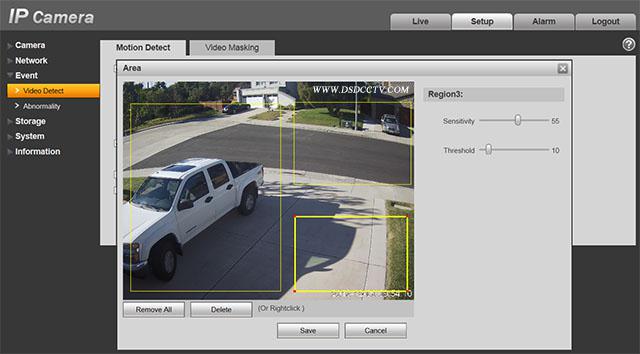
If you want the camera to FTP event videos, go to the Storage, Destination screen, select the FTP tab and enter your FTP details. I used this feature to create the videos used here, worked very well. What interesting is that YouTube took the .DAV files as-is. Dahua comes with a CD that contains player software to play .DAV files on your PC.

Next go to the Record Control screen to set options here, like what stream to record.

And the last thing is setting the recording schedule if you want set which days/times to enable motion detect recording or to record full time.
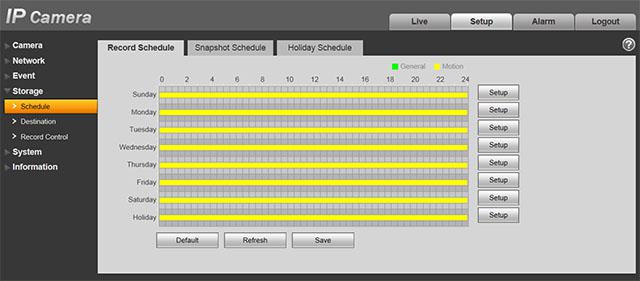
Now onto the images, how well does this camera perform. I mounted the camera at two places, one at the front of my garage, under the eave, and in my backyard because they represent different lighting situations. This camera has the 3.6mm lens which is fairly wide and covered most of front of my home.
As with my other reviews, click on the images below to see the full size image, straight from the camera.
This is a daytime shot, after a rain. The detail, color, contrast is pretty good. What’s nice is that with WDR off, you can still see the detail in the tracks for the garbage can lift. In most cameras, without WDR you would not see this, it would just be dark. If you chose WDR, it does not work that well. It looks like a fog over the image and no matter what you set the percentage of WDR, from 1 to 100%, it looks the same to me. This camera does well with WDR turned off as well as or better than most other cameras with WDR turned on.
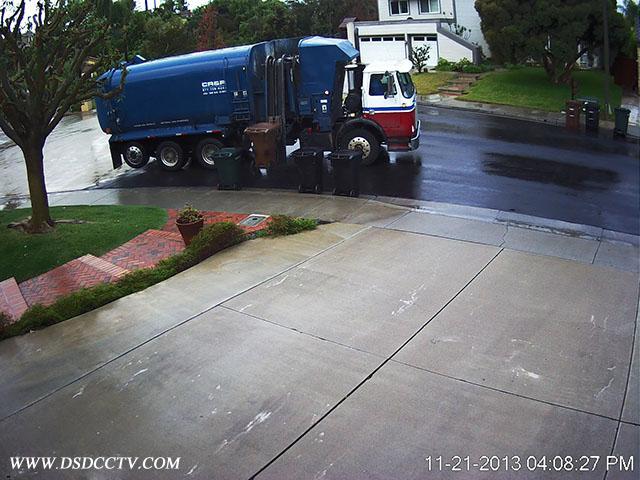
At night, the image quality is pretty good, in this case with WDR turned off, exposure at AUTO.
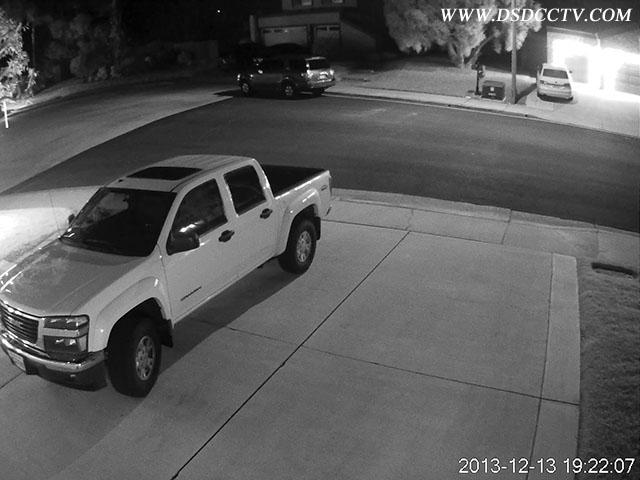
With WDR set to 20%, and again, it does not make much difference what you set it to, you definitely get more detail in the shadows like the car across the street.
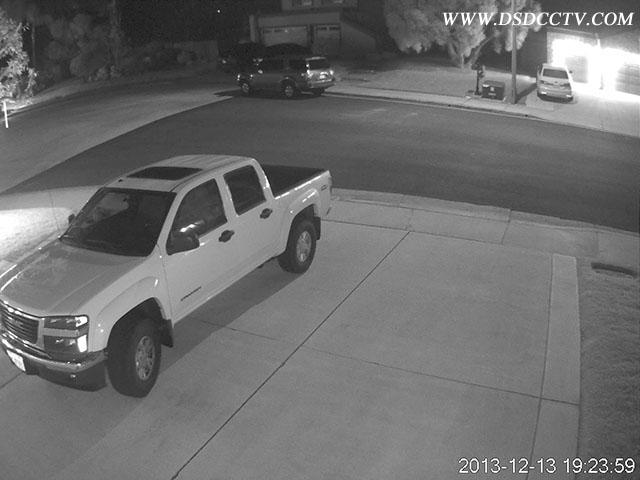
This is a daytime shot in the backyard. It was a dark gloomy day, so not a lot of harsh sun.
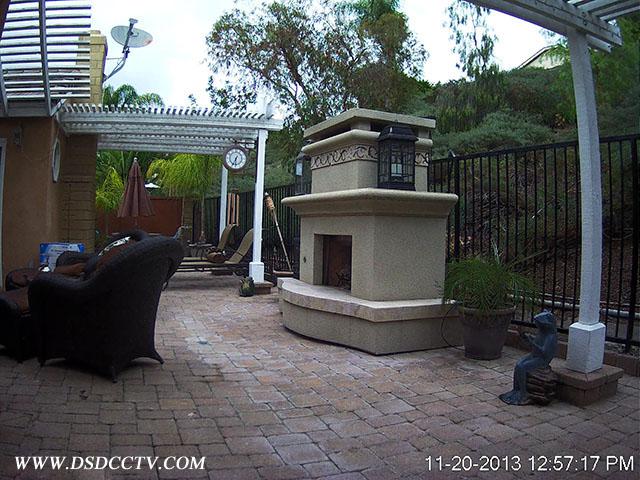
At night, in the backyard with WDR turned off, the image quality is pretty good. You see that the IR illuminators are more concentrated toward the center of the image, not as evenly lit as their larger bullets. While they claim a 30m illumination working range, I would say like in most cases, it’s good for about half that.
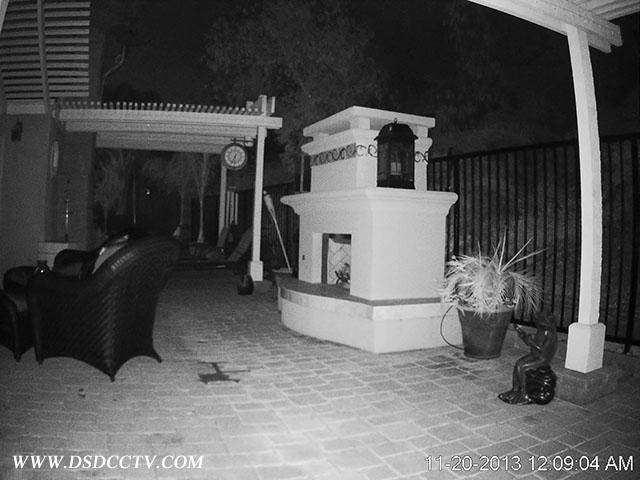
With WDR set to the default of 50%, you can see much better detail in the shadows. This may be a good case for day/night profiles where you can set WDR off during the day, and on at night it that suits your situation.
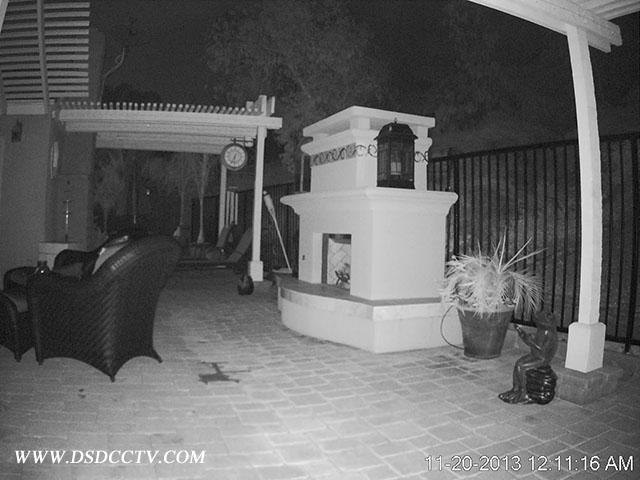
I uploaded day and night videos to YouTube. To see them at the full 3MP resolution, you must click on the gear icon and select 1440P resolution and then click on the icon with 4 corners to see the video full screen.
The pluses for this camera are;
1. Good value for the money
2. 1080P at 30fps or 3MP at 20fps
3. Bright IR illuminators
4. Day/Night IR Cut Filter
5. Smartphone apps – everyone wants to access their cameras from smartphones these days
6. They fixed the issues with previous products regarding color accuracy, muddled noise reduction and aspect ratio of initial display
- Pre:Dahua IPC-HDB3200C 1080p mini 2014/9/3
- Next:Dahua IPC-HFW3300C 3MP bullet 2014/9/3
